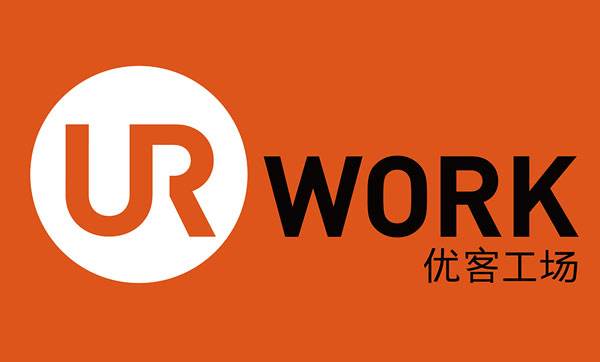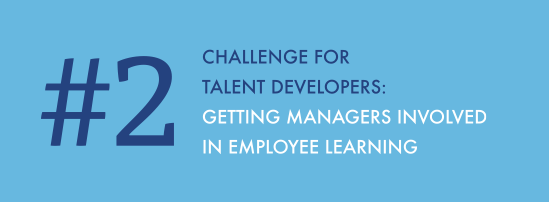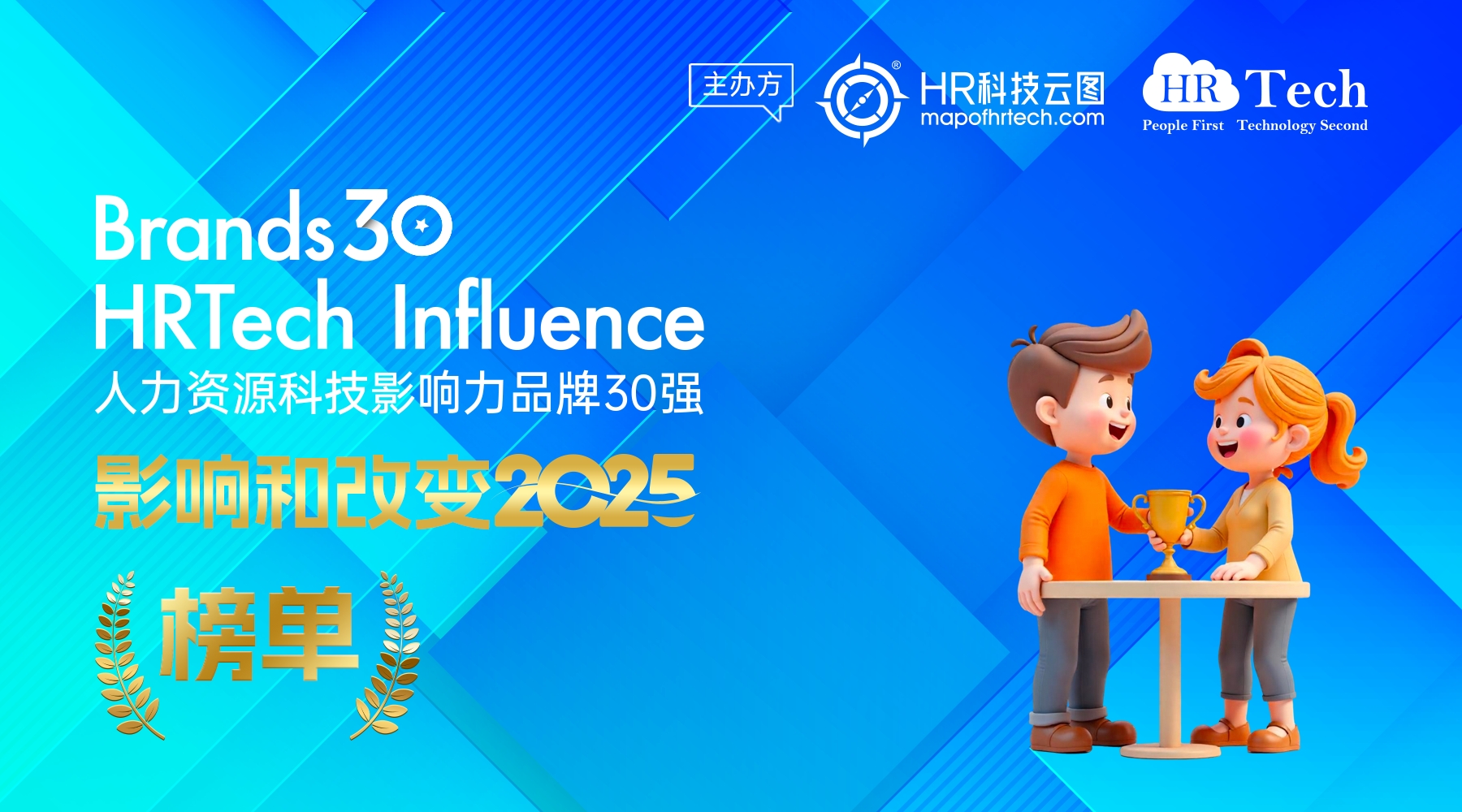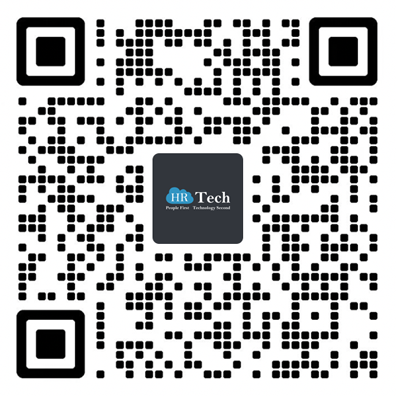linkedin
重磅!LinkedIn将收购Glint:员工敬业度市场的重大变化
今日消息,职业社交网站LinkedIn 宣布收企业服务初创公司 Glint,相关收购条款尚未公布,消息人士称收购金额超过 4 亿美元。Glint 团队将并入 LinkedIn,但将会独立运营,由其现任 CEO 和创始人吉姆 · 巴内特领导 。Glint 公司总计融资了将近 8000 万美元,在上一次融资活动中,估值约 2.2 亿美元。
多年来,LinkedIn公司的主要精力都放到了如何扩大活跃用户数量和营收上。它通过其平台上的付费用户,尤其是企业用户来创造营收。现在,LinkedIn公司的一些创收产品包括高级会员、招聘(人才解决方案)和教育。收购Glint公司有助于LinkedIn公司推出更多针对其用户的服务。它的现有服务已包括教育、CRM(客户关系管理)工具以及企业情报服务。
Glint 公司的现有产品包括员工参与度、员工生命周期、管理有效性和团队有效性。该公司通过对员工进行调查并使用自然语言处理工具来分析数据,以衡量员工对管理、薪酬和企业文化等的感受,并给企业客户提供建议。
目前LinkedIn公司正在构建各种解决方案来帮助员工发展自己的事业(例如通过其教育产品来培训员工),而这又可以促进该公司的其他服务,因为某些反馈信息可以用来打造具有针对性的员工培训计划。
以下为LinkedIn官方宣布:
今天,我们宣布达成收购Glint的协议,Glint是员工敬业度的领导者,帮助组织中的人员尽最大努力,发展他们的技能并改善业务成果。结束后,欢迎Glint加入LinkedIn家族,我感到非常兴奋。
作为LinkedIn的人才和学习产品的负责人,我花了很多时间思考如何帮助回答一些让人力资源领导人在夜间工作的最棘手问题:如何了解整体健康状况和绩效我的组织?我在哪里可以找到我需要的新人才?我的团队的能力是否与业务需求保持一致?我如何确保吸引,培养和留住最优秀的人才来建立成功的团队?
考虑一下这些机会。
凭借LinkedIn对更大员工队伍的洞察力以及Glint对员工敬业度和技能的内部观点,我们将能够帮助人才领导者回答所有这些难题。
这是我对我们可以一起做的潜力感到兴奋的原因之一。我们相信Glint已经发现了每个公司应该做的现代人力资源最佳实践:定期收集员工对工作,文化和领导力的反馈,并为领导者提供将这些见解转化为行动所需的工具。在LinkedIn,作为Glint的客户,我们体验到了第一手的价值。Glint为管理人员提供工具,以回答有关他们所拥有的人才的健康和快乐的问题,同时为各级管理人员提供他们需要改进的机会和洞察力。现在想象一下,通过我们的综合服务,我们可以将经理从Glint员工那里获得的具体反馈转化为个性化的LinkedIn学习体验,重点关注有助于他们改进的主题,
Glint拥有广泛的客户群,每天都使用它来帮助人们加速他们的职业生涯,并受到人才领导者的喜爱和信任。Glint的使命是帮助人们在工作中更快乐,更成功地完全符合LinkedIn的使命,即连接世界各地的专业人士,使他们更高效,更成功。
我们对Glint的整合以及我们可以共同推动Glint的发展所带来的可能性感到兴奋。Glint团队了解伟大的公司是由伟大的团队建立的,伟大的团队由伟大的文化推动。我们不能更高兴Glint的才华横溢的团队将加入LinkedIn。
Glint首席执行官兼创始人Jim Barnett将向我汇报,Glint将作为LinkedIn内的团队运营,以便他们能够维持和加快业务发展势头。所有其他Glint高管将继续向Jim报告,除了人力资源,财务,信息安全和法律,他们将加入LinkedIn的职能团队。在接下来的12-18个月内,我们计划在LinkedIn内功能整合团队。
你可以在这里从吉姆那里了解更多关于Glint的愿景。
在完成惯例条件后,收购预计将于2019年第二财季(截至12月31日)结束。
作者:Daniel Shapero Vice President Talent Solutions, Careers, & Learning at LinkedIn
来源:https://business.linkedin.com/talent-solutions/blog/product-updates/2018/linkedin-and-glint-helping-talent-leaders-build-winning-teams
下面是Josh Bersin的评论~
本周在LinkedIn Talent Connect会议上,LinkedIn宣布了一项突破性的举措:计划收购Glint,这是员工敬业度解决方案的市场领导者之一。
Glint是我公司成立以来一直在谈论的公司,它为员工调查和传感提供了最具可扩展性和人工智能驱动的解决方案之一,公司发展迅速。首席执行官和创始团队拥有硅谷技术血统,因此他们从一开始就以这种技术为中心。
虽然构建员工调查似乎很简单(有数百种工具可以做到这一点),但实际上部署了一个“监听架构”,可以收集年度调查,新员工调查,退出调查以及员工数十个其他时刻的数据。事业,其实很辛苦。IBM收购了Kenexa,试图追逐这个市场,经过两年的研发基本上放弃了该平台并决定退出该业务。CEB(现为Gartner)也是如此。
为什么这么难?因为调查和收集数据的问题实际上更多的是分析和AI问题,而不是调查问题。
每次从员工处收集数据时,您都需要知道他们所在的部门,您正在调查的活动以及有关其位置,时间和其他工作相关信息的各种人口统计数据。您是否知道上午进行的民意调查比下午的民意调查更积极?或者,那些在移动设备上进行调查的人往往比坐在他们电脑上的人更积极?
然后,当您收集所有这些数据时,您希望将其与许多其他信息进行组合,比较和聚合。我们如何将调查数据与销售效率相关联?周转?客户满意度和保留率?所有这些都是公司提出的常见问题,当平台笨重时,公司必须建立自己的数据仓库或在Excel或其他工具中进行大量额外工作。
第三,还有更多的分析要做。现在我们需要有关组织网络分析(沟通模式),情绪(调查和电子邮件的基调和调整)的数据,甚至想要比较工作活动的数据。一家公司在办公桌下安装了热探测器,以确定人们何时坐在他们的办公桌前(他们试图让人们进入办公室),现在许多公司都会查看徽章阅读器数据,旅行数据,甚至感觉到的智能徽章压力在你的声音。
所有这些数据都是人口分析不断扩展的世界的一部分,因此像Glint这样的平台比仅提供和报告调查的工具更具战略性。
LinkedIn有很多理由进入这个市场
首先,该公司现在提供广泛的人才和学习解决方案,因此帮助公司了解参与是自然的下一步。拥有超过6亿用户和数百万企业客户(仅限LinkedIn Learning有超过1400万付费用户订阅),LinkedIn现在也可以帮助所有这些公司收集参与数据。这是一个快速增长的业务,LinkedIn可以轻松地快速销售此解决方案。
其次,该公司的核心是以数据为中心的业务。LinkedIn最重要的创新是该平台不可思议的识别人员,将您与需要知道的人联系起来的能力,以及作为职业生涯各阶段人们的学习和协作平台。想象一下,如果将雇主参与数据添加到这种组合中,LinkedIn可能会变得多么强大。(注意Glassdoor。)
第三,LinkedIn学习和招聘解决方案与员工调查数据非常相互依赖。当一个人在工作中挣扎或者可能落后于他们的角色时,他们往往有很多话要说公司可以做些什么来改善他们的生活。这种类型的参与数据对于L&D或人力资源组织来说是非常宝贵的,可以直接输入到LinkedIn Learning中,以提供更强大的学习解决方案。像Degreed和Edcast这样的LXP供应商正在努力构建用于培训的机器学习算法:如果将Glint驱动的调查内置到该平台中,LinkedIn可能能够快速推进。
第四,我不得不相信LinkedIn会更多地使用Glint的平台。Glint推出了一个绩效管理工具,因此LinkedIn可以决定进入该市场。但进一步说,工作的未来都是关于人工智能驱动的建议; 为个人提供更好的工作,为管理人员提供便利,为人力资源专业人士提供更强大的行动导向。Glint的AI驱动情绪分析和纵向调查分析(Glint可以将各种调查连接到一个非常强大的综合报告中)无疑将帮助公司提供更多创新。
最后,我们真的不知道微软将在这一切中发挥什么作用。到目前为止,微软与LinkedIn的整合有点稀疏,但想象一下这个世界上Glint支持的参与度调查出现在Office中?人力资源的一大主题是我称之为“ 工作流程中的人力资源”。这次收购确实使这种潜力更接近现实。
我一定会让你快速了解这一切的发展方向。我要说的是,这显着改变了员工敬业度市场,我们可以期待LinkedIn和Glint在未来几个季度中出现一些有趣且令人兴奋的新发展。
(注意:此市场中的参与供应商包括CultureAmp,TinyPulse,Ultimate Software,ADP,CultureIQ,SurveyMonkey,HighGround,Quantum Workplace,Qualtrics,Great Places to Work,Energage,Gallup,AON Hewitt,Humu等等。)
本文由AI翻译完成,仅供传递资讯参考。
参考链接:LinkedIn斥资4亿美元收购企业服务初创公司Glint
LinkedIn acquires employee engagement platform Glint
LinkedIn + Glint: Helping Talent Leaders Build Winning Teams
linkedin
Facebook为 “打击”LinkedIn,从招聘平台Refdash挖走高管团队
文/Josh Constine, Ingrid Lunden
据TechCrunch报道,Facebook正在从招聘平台Refdash聘请大批人才来加剧其对LinkedIn的“打击”。
知情人士称,Refdash的部分领导高管成员正在加入到Facebook中。Refdash在技术招聘中具有独特优势和良好的口碑,可以弥补Facebook在服务和零售也工作机会之外的不足。2017年,Facebook上线工作列表功能,让用户即使在不积极寻找新就业机会的前提下,也可以接触浏览到各种工作机会内容。Facebook认为它的平台是人与工作连接最自然的地方。因为庞大的用户量,一些企业可能愿意付更高的费用在Facebook上,而从LinkedIn离开。
对于Refdash平台大量员工的转入,Facebook确认这不是一次收购项目。而随着Refdash领导团队的离开,Refdash没有公布下一步计划,它的网站平台上贴出公告称,“网站暂时停止访问,以便产品升级和为您带来更好的求职体验。”
Refdash于2016年在山景城(Mountain View)成立,并从创始人友好实验室(Founder Friendly Labs)获得了一笔未披露数额的资金。用户会进行模拟面试,打分,然后将他们的表现匿名分享给潜在雇主,让他们与合适的公司和职位匹配他们的技能。这使得工程师不必忍受与大量不同雇佣者的艰苦审讯。Refdash声称其用户遍布Coinbase,Cruise,Lyft和Mixpanel等创业公司。
消息称,Refdash专注于了解人们深厚的专业知识,并将其发送给合适的雇主,而无需通过可能会给流程带来偏见的表面简历来判断。它还鼓吹允许租用者在不知道他们的履历细节的情况下浏览候选人,这样可以减少歧视并帮助确保在求职过程中的隐私(特别是如果求职者仍在别处工作,并且在求职时尽量谨慎)。
很容易想象Facebook构建自己的编码挑战和谜题,程序员可以通过它的Jobs产品与合适的招聘人员配对。也许Facebook甚至可以建立一个类似Refdash的服务,尽管它进行的一对一反馈可能无法满足Menlo Park的喜好。如果Facebook不仅能让求职者更容易申请工作,还能让求职者更容易接受面试,那么它可能会把人才和广告商从LinkedIn吸引到一个已经成为人们日常生活一部分的产品上。
Refdash的联合创始人在建立帮助为现有服务添加新功能的公司方面有着良好的记录。Nikola Otasevic和Andrew Kearney分别担任Room 77的工程师和技术负责人,2014年谷歌将其用于帮助重建其垂直旅行搜索,当时它被描述为一项授权交易,尽管现在Refdash的创始人称之为收购。
通过远程测试改善招聘基本流程的构建工具可以帮助Facebook在技术招聘方面获得优势,但并不是唯一一个构建此类功能的人。Skype(与微软旗下的LinkedIn同类)去年公布了面试,让招聘人员用实时代码编辑器测试开发人员和其他申请技术职位的人。领英(LinkedIn)尚未将其纳入其平台。
以上为AI翻译,观点仅供参考。
原文来源: Facebook poaches leaders of Refdash interview prep to work on Jobs
linkedin
LinkedIn推出Talent Insights,正式涉足商业智能领域
文/Ingrid Lunden
LinkedIn ,一个专门发布个人或组织专业档案的公共网站,人们将其视为网络招聘的起点,如今这项服务已经吸引了超过5.75亿用户,2000万家公司和1500万活跃职位列表。但现在在微软的所有权下,该公司已经开始越来越多地构建其它服务; 今天看到最新的服务是它们推出的一个名为Talent Insights的新功能。
Talent Insights之所以重要,部分原因在于它是LinkedIn首次涉足商业智能。作为该企业分析的一个分支,它旨在帮助高管和其他企业最终用户做出更明智的业务决策。
此外,Talent Insights值得注意是因为它是趋势的一部分。LinkedIn已经推出了许多其它服务,使其不仅仅是一个单纯的社交网络,而更多的是IT生产力工具。它们为用户提供了一种查看和计划前往潜在工作(或其它业务)的通道; 与Microsoft软件集成,包括与Word 和Outlook中的简历构建集成 ; 并在其Sales Navigator 产品中添加更多CRM工具。
有趣的是,距离LinkedIn 首次宣布Talent Insights 到今天实际推出已有一年。该公司表示,部分原因在于期间一直在修补它的缺口以使产品完善:它一直在与众多客户间进行测试——现在有100个使用Talent Insights——比如在人力资源、招聘和营销等部门工作的员工。
今天推出的产品大致类似于公司一年前预览的产品:它有两个部分,一个专注于公司人员,称为“人才库”,另一个专注于公司数据,称为“公司报告”。
其中第一项将允许企业在LinkedIn数据库中进行搜索,以发现那些与企业已经招聘过的人才特征相似的人才,并找出他们目前的位置(就位置和公司从属关系而言),以及他们动向,他们可能有什么共同的技能,以及如何更好地发现那些拥有所有这些特征的人。
第二组数据工具(公司报告)提供了类似的分析概况,比如关于您的组织以及您希望在相关教育水平和相应劳动力学校等领域与之进行比较的组织; 员工拥有或不拥有的技能; 等等。
运营Talent Insights的高级产品经理Dan Francis在接受采访时表示,目前用于为Talent Insights提供支持的大部分数据主要来自LinkedIn本身,尽管还有其他数据来源,例如来自劳工统计局的材料。(事实上,即使是LinkedIn的其它一些数据库,例如在其招聘列表中,甚至在其新闻/内容播放中,填充两者的材料都来自第三方。)
他还补充说,让公司提供他们自己的数据来使用数字运算——无论是他们自己的报告还是其他公司的报告 - “在我们的路线图中,”表明LinkedIn看到了这个产品的一些进程。
添加更多数据源也可以帮助公司显得更加公正和准确:虽然LinkedIn在专业配置文件方面是庞大的,也是同类信息中最大的信息库,但它并不总是准确的,比如在某些情况下可能完全受过时了或故意误导的信息影响。
(相关:LinkedIn还没有为人们发布任何“验证确认”的个人资料,例如你在Facebook或Twitter上发布,以证明他们是他们所说的人,他们在工作的地方工作,以及他们的背景这是他们声称的那样。我猜测可能是如果是错的,以明确的方式验证一切是非常困难的,所以LinkedIn依靠公众监督的力量来保持人们的诚实度。)
“我们对此非常透明,”Francis说。“我们并不认为这是一种全面的产品,但它是一种代表性的样品。在确保数据质量良好方面,我们非常谨慎。我们知道有时数据并不完美。在某些情况下,它是方向性的。“
以上为AI翻译,观点仅供参考。
原文来源:LinkedIn steps into business intelligence with the launch of Talent Insights
linkedin
优客工场2亿元人民币收购火箭科技 布局互联网与智慧办公
9月12日消息,优客工场以2亿元人民币估值并购智能化办公平台“火箭科技”,布局互联网与智慧办公。
完成收购后,优客工场将为火箭科技的智慧化解决方案提供线下使用场景,火箭科技将帮助优客工场在智能会议、智能日程、智能门禁和智慧协作方式等领域展开大规模产品开发与智能办公模式创新。
另外,7月份优客工场宣布以3亿元并购上海共享办公企业Workingdom,这是今年优客工场完成的第四宗战略并购。
今年8月,优客工场宣布获得路劲产业与景荣控股的3亿元人民币战略投资,增资完成后,优客工场估值突破18亿美元。
优客工场创始人毛大庆表示,建立在优客工场规模化优势基础上,“时间仓储+小程序”的全新互联网流量方式与智慧办公的自主研发能力将形成化学反应。同时,火箭办公仍将坚持平台化独立发展。
火箭科技于2017年11月创办,由前来来会创始人王国航、前ZEPP创始人韩铮联合创办,先后获得鼎晖、复星锐正、GGV等一线投资机构注资。
面对现有共享办公和商业地产空置率、盈利能力、办公智慧化等问题,火箭科技试图通过“碎片化时间仓储获客+智能化服务存留”的模式解决行业流量及服务的核心问题。
软件方面,火箭办公将通过App和小程序等解决方案,让会员方便管理会议和商务关系,对标海外的Google/Outlook Calendar + LinkedIn, 形成商务活动管理和商务社交的新入口。
硬件IoT方面,“melo会议机器人”作为智慧办公的入口产品,进入到所有适合的会议室与办公空间,除了对会议进行记录、听写、翻译、分享等功能外,还将作为智慧办公的标准方案,通过语音交互和软件交互,控制办公室和会议室的其他设备、会议室预约登记、访客管理等。
火箭科技旗下的火箭办公还推出按周、月、季分时租赁的散座和单间体系,将优客工场常规长租产品(六个月以上租期)之外的闲置工位、会议室、咖啡厅、路演厅等进行打包优化售卖,进一步降低入驻的行业门槛、盘活库存。
火箭科技还将联合优客工场生态圈及旗下商办品牌“碎片空间”及“磨呗”,帮助“后共享办公时代”的企业寻找更为灵活的创业2.0阶段办公空间解决方案,并在体系内建立“企业信用免押”方案。
来源:优客工场2亿元收购火箭科技 布局互联网与智慧办公
linkedin
LinkedIn为招聘人员提供语音留言系统
领英(LinkedIn)宣布,将在其产品中添加语音信息,以增加用户进行对话的方式。对于招聘人员来说,这代表了一种吸引潜在求职者的新方式。
语音信息正在LinkedIn的iOS和Android应用程序中推广,你可以在手机和网络上接收语音信息。
这是它的工作原理;
点击手机短信键盘上的麦克风图标,然后点击并握住圆圈内的麦克风,录制语音信息,松开手指发送。
如果你想在发送之前取消,将你的手指从麦克风图标滑动,同时按住它。
纳什维尔IQTalent Partners的高级合伙人兼联合创始人克里斯•默多克(Chris Murdock)对我说,“这是一个很酷的想法”,但他也希望有视频。“我们倾向于在Hangouts、Zoom、Teams和Slack上看到大多数客户。当被问及他是否会鼓励他的招聘人员和客户使用这些功能时,他说,“我们可以做任何事情来让自己与众不同,并与顶尖人才接触。”
史蒂夫·利维(Steve Levy)是一位来自纽约的经验丰富的人力资源和招聘人员,他对此有不同的看法。他说,他对用它来代替文字持怀疑态度,因为他担心人们只会像语音邮件或电话营销人员那样使用它。
作为一名前招聘人员,我对这个想法表示赞赏。这有助于区分你的工作范围。但招聘人员要明智地使用它。我的建议是要让人难忘,用它来让自己从竞争中脱颖而出。
听一听它将如何被使用以及用户将如何反应,肯定会很有趣。
LinkedIn announced they are increasing the ways users can have conversations by adding Voice Messaging to its offering. For recruiters this represents a new way to engage potential candidates.
Voice messaging is rolling out now in the LinkedIn app on iOS and Android, and you can receive voice messages on mobile and on web.
Here’s how it will work;
Simply tap the microphone icon in the mobile messaging keyboard, then tap and hold on the microphone in the circle to record your voice message and release your finger to send.
If you want to cancel before sending, slide your finger away from the microphone icon while holding it down.
Chris Murdock, Senior Partner and co-founder of IQTalent Partners in Nashville told me “it’s a cool idea” but he would love to also have video. “We tend to see most of our client on Hangouts, Zoom, Teams, Slack.” When asked if he will encourage his recruiters and sourcers to use the features he said yes, “anything we can do to differentiate ourselves and engage with top talent.”
Steve Levy, veteran sourcer/recruiter from New York had a different take, saying he is dubious about using it in place of text, over worries that people will just use it like voicemail or telemarketers.
As a former recruiter myself I applaud the idea. It can help differentiate your outreach. But it will be up to recruiters to use it wisely. My advice is be memorable and use it to set yourself apart from the competition. It will certainly be interesting to hear how it will be used and how users will respond.
LinkedIn introduces voice messaging system for recruiters
LinkedIn has recently announced that they will expand user capabilities for communication through the addition of Voice Messaging - and for recruiters, this means a whole new avenue to getting in touch with potential hires.
Voice messaging is rolling out now in the LinkedIn app on iOS and Android, and you can receive voice messages on mobile and on web.
Here’s how it will work:
Simply tap the microphone icon in the mobile messaging keyboard, then tap and hold on the microphone in the circle to record your voice message and release your finger to send.
If you want to cancel before sending, slide your finger away from the microphone icon while holding it down.
linkedin
区块链欲夺权职场社交,LinkedIn被斥古典互联网垃圾
文| Peter McCormack
编译| 区块链前哨(ID:blockchain-666)
导语: 本文作者是币圈的投资人,投资了 SpringRole。SpringRole 是一套去中心化职业网络,亦属于领英的直接竞争对手。在这篇文章中,他吐槽古典互联网的产品LinkedIn:LinkedIn 的网站看上去就像十年前的 WordPress 的免费皮肤;newsfeed 里都是垃圾营销、自我宣传;上千联系人,多数不认识;虚伪的职场社交 ...
领英:一个充斥着垃圾与无意义陌生人的世界
邮件提醒: 〈某个您并不认识的人〉想与您联系。耶,又有人想跟我联系了——不知道这家伙到底有什么动机。也有人问我是否对其蹩脚的 ICO(首次代币发售)感兴趣,或者是否打算买点比特币花花。
这就是我在领英上感受到的一切:登录、接受请求、阅读垃圾邮件,而后将相关用户拉黑。没错,我已经厌倦了去查看“谁看过我”,我真正关心的就是推送自己的内容——换言之,我根本不鸟其他人发了些什么。
事实上,领英已经变得几乎毫无意义,并成为一套完全以自我为中心的社交网络平台。
有趣的是,Twitter 在专业性方面也开始超越领英:
我发布的内容吸引到更多对此感兴趣的用户。
我能够发现更多自己感兴趣的内容。
我与自己真正关心的用户接触,与之交流甚至建立友谊。
Twitter 的另一大优势在于,我非常享受在这里与他人讨论甚至是辩论的过程,这意味着我愿意经常回到 Twitter 。而领英……抱歉,我真的不关心那些我根本不认识的人是否找到了新工作,或者哪位老同事在 PPT 里列出十种网站优化方法。
除了使用 InMail 预约采访之外,领英几乎没有任何实际意义。
领英:混乱的社交网络!
领英似乎正经历一场严重的生存危机:
它是一套专业性网络平台吗?
这是一套类似于 Facebook 与 Twitter 的通用型社交网络平台吗?
或者,这是一家以货币化模式为核心诉求的广告媒体公司? 谁知道呢。领英似乎是对其它社交网络的特点搞了一番“拿来主义”,并希望借此建立自己的商业社区生态系统——但结果显然并不理想。
那么,领英平台到底想不想为企业或专业人士提供价值?领英到底有何实际用途?
要回答上述问题,我们首先要关注领英网络目前面对的几个问题。 我个人也不愿意把太多精力浪费在 UI 设计上,但仍然得给领英提个醒,谷歌和 Facebook 绝对不是闲得无聊才去钻研设计的。在我看来,领英的设计水平还停留在十年前免费 WordPress 主题的层次。
另外,领英在新闻传播方面也存在致命伤。很明显,领英受到了某友商的启发——算了,就是 Facebook——并将其作为领英上的核心功能体验。然而,领英学到的究竟是什么?毫无疑问,讨厌的广告以及由此带来的强制性浏览量。
但为了不至于吓跑用户,内容本身必须得有吸引力。Facebook 公司目前正在努力建立平衡点:如果想看点精彩的图片,那大家先要忍受一点新闻和广告推送。这还算公平,毕竟只要内容有趣,浏览过程稍微烦人些也可以接受。
但问题在于,领英的新闻来源仅限于其自助式商业内容,而这部分资讯只能吸引到核心用户——他们已经建立起了“病态般的”使用习惯。他们每天早上 5 点起床,强迫症般地打开领英并从中寻找有价值信息。
新闻传播的实际效果取决于我的关联用户,在我自己的 2500 位联系人当中,主要包含以下几大类别:
一小撮真正的朋友。
一小部分曾经有所合作,但如今已经不再往来的用户。
相当一部分接受了好友申请,但根本不认识或者不在乎的用户。
虽然领英将自己标榜为职业网络,但其在社交功能方面显得非常匮乏。虽然用户可以在这里创建并分享内容,但愿意花时间做这种事的往往是那些所谓“既得利益者”——例如营销人员与公关人员。遗憾的是,大多数成员都不怎么爱发言,甚至很少登录领英。因此,领英虽然具备社交性质,但其实际体现出一种反社交倾向。 所以在我眼中,新闻内容就只是内容,我根本不关心发布这些新闻的那群陌生人。
哦,还有广告!用过的朋友一定知道我在说什么,必须承认这些广告简直烂得令人发指。
领英一直未能解决的另一大问题在于信息的真实性。用户提供的任何信息或者声明都不具备有力的证据支持。没有任何验证过程以确保用户个人资料的真实可信。
在领英上,获得技能认可简直简单到不能再简单。只要完成注册,用户就可以为自己添加技能。更糟糕的是,任何用户都可以宣称自己拥有某项技能,而其他素未谋面的使用者则可毫无理由地为其提供背书。
那么,提供背书能证明用户之间存在关联吗?或者说,这只是一种让人们讨好对方的不可靠方式?反正我在添加新技能的时候,就有一大堆我根本没见过的用户前来背书——这实在是太假了。
接下来是评论。现在领英的评论已经烂到无法直视——换言之,互相吹捧之风极度盛行。只要你来捧,我也会立即回捧,大家就此沉浸在成功人士的幻觉当中。正因为如此,根据个人资料来看,我现在已经全面精通数字化业务,而且在数字营销领域拥有完美无瑕的职场表现。但实际情况是,我根本没那么牛——我连账户管理都弄不好,会议经常以致而且捅出过不少娄子。我最多只能算是擅长规划,而且讲话比较简明,因此客户比较信任我的判断——但不允许我参与实际操作。看看,领英与真实之间相距有多远!
这也正是问题的根源。领英必须让每个人都在这套社交平台上待得舒心愉快,而他们给出的办法就是让每个人都看起来无与伦比。最终,这就造成了另一种困境——正如 Yelp 上每家餐厅都只拥有五星评价一样,我们根本无法据此作出任何判断。
当然,如果太过诚实,结果也不会更好:“抱歉,但 Johnny 同志简直无可救药,所以我们必须请他滚蛋。他总是迟到、工作懒散,而且整天都在对着 YouTube 视频发呆。”面对如此透明的平台,用户肯定想马上逃之夭夭。
但 Johnny 完全可以隐藏掉这些污点,而领英马上会将其塑造为卓越员工,并强调 Johnny 曾经在错误当中学习到大量宝贵经验。
领英:我要赚钱!
长久以来,领英的主要收入来自企业订阅服务。在这种模式下,企业需要向领英方面支付费用,从而获取专业人士资料并与之联系以完成招聘。随着生态系统的发展,领英逐渐面临来自 Facebook 与谷歌的激烈竞争,毕竟后者通过广告能够赚取更多收益。最终,领英屈服于压力并开始发布自己的广告。这一决定令领英变得特色全无。
此外,隐私也是个值得关注的重要问题。领英平台提供一系列隐私选项,但糟糕的设计使得整个设置导航流程变得极为复杂。考虑到我对这套平台本来就不怎么上心,因此也不可能投入大量时间和精力研究如何通过设置限制针对自己账户的欺诈活动。
更重要的是,领英上的工作生态系统存在根源性缺陷。当用户声称的技能不再可信时,其生态根基就已经彻底崩溃。领英最终成为一种营利模式的代表,在这里企业发布工作岗位,而用户搜索工作岗位。而为了享受这项服务,企业忹用户都需要向领英支付订阅费用。
解决方案:我的投资决定(请大家酌情考量)
下面,我来聊聊我自己关注的解决方案。首先强调,之所以投资 SpringRole,是因为其解决一个实际问题。
现代技术为我们提供了能够攻克领英内在缺陷的机会。举例来说,区块链能够让这样的平台实现声明真实性。任何用户发布的声明内容都需要接受验证,写入至区块链中且不可再行修改(这意味着内容不可变)。用户可以控制自己的所有数据,并将其分享给任意对象。由于所有用户声明技能皆可得到充分证明,因此这套平台能够提供职业生态系统最重要的逻辑根基。
在加密货币的世界中,以正确方式使用代币能够帮助平台建立起责任制度。举例来说,SprinRole 正在利用代币构建一套基于信任的职业网络,其中每位用户都必须对其声明内容负责。在这套平台上,每位用户都会获得代币作为诚实表现的奖励。更具体地讲,当人们必须支付拥有真实价值的代币来进行信息证明或验证时,这套系统才真正具备约束力。
区块链及其应用将给各个行业带来巨大变化,而互联网世界也许会由此迎来更加真实可靠的光明未来。
我绝对不只是说说的,我真心认同这一点,而且把自己的钱投了进去!
linkedin
淘汰简历,颠覆LinkedIn,区块链还要帮HR干这些事!
作者:Ashik Ahmed
编译:Finn
编者注:Ashik Ahmed是Deputy的CTO兼CEO兼联合创始人,Deputy则是一个全球员工管理平台,用于员工排班,时间表规划和沟通写作等场景。
区块链即将彻底改变商业经营模式,有些改变之深刻或许超乎想象。虽然与比特币及其他加密货币关系密切,但区块链技术已经准备好打破一切旧有秩序。
区块链的分布式计算机网络能实现信息流的自动化验证。这使得它成为一个值得信赖的系统,在掐掉中间人的同时存储数据。这也是金融行业致力于上链的原因,同时解释了为什么区块链可能彻底破坏人力资源专业人员的工作方式。
如果充分利用区块链的能力,人力资源管理的各个过程就能拥有更加准确和有效的选择。无论是招聘、税收等大型项目,还是工资单等小规模任务,区块链的存在会给人力资源管理带来非常多的改变。
淘汰简历,颠覆LinkedIn
区块链技术完全有能力让老式简历以及类似LinkedIn的职场社交网络变得过时,因为区块链将存储他们的所有就业历史记录,而不是由职位申请人自己撰写他们的工作经历。
这将彻底改变公司招聘人选的方式——人力资源部门不需要进行冗长的确认工作历史的验证过程;他们可以简单地建立公链,甚至有可能将过往绩效指标、晋升情况以及离职原因都记录在案。
一旦实现这些功能,招聘过程中的很多极具主观性的内容将被彻底剔除。求职者不会根据他们正在申请的工作来刻意调整简历或捏造过往表现,因为区块链可以完整记录求职者的成功和失败,并鼓励他们接受这些失败以及从中吸取的教训,而不是避而不谈。最重要的是,更全面的信息将有助于公司做出更好的决策,并让真正优秀的员工站稳脚跟。
届时,LinkedIn等公司存在的意义就是不断优化区块链应用的交互界面等,而入君那些就业历史和“内容”或将全部从公链中撤出。
税务的准确化和自动化
众所周知,劳务合同的税收非常复杂。 从注销到估税,年度税负对于员工和企业主来说都很头痛。在我的祖国澳大利亚,预估小时工的税率就可能非常不准确。 比如说,假设我平日里每小时赚20美元,但在某个特定的日子每小时能赚100美元,那么将会以每小时100美元的标准征税。这会让许多人处于异常的高税率水平。而人们则必须等待一整年才能缴纳税款,告知政府自己付了过多的钱,然后才能拿回退税。
此外,如果想要减税,还需要一丝不苟地追踪自己的花费并保存相应收据。这一幕像极了《宋飞传》中Jerry绝望地打着电话,试图找到证明几年前他购买电脑的证据。
这正式区块链可以改善人们生活的地方——一个公平负责的制度,没有任何事情可以例外。区块链可以自动跟踪收入和购买情况,并根据收入实时重置税率。无需一整年的等待,也不需要为保存收据而烦恼。
简化日常任务
通过区块链,从工资名单到发放工资,甚至管理合同所有内容等工作都可以变得更高效。区块链技术允许公司在世界任何地方即时且安全地发送和接收资金,而无需使用银行作为中介,也不需要相应的费用。
此外,它还可以通过实施可以自动执行预定条款的智能合约来削减管理合同的大量日常任务。在智能合约的帮助下,合同双方利益都将得到保证而不必花费经历时时提防。
区块链效率大于顾虑
通常情况下,技术专家口中的创新多是一种技术的翻新。他们不是提出真正新颖的技术,而是在已存在的东西上稍加改变。但区块链不同——区块链真正意义上颠覆了过往。
这也是为什么区块链引发混乱的原因——它比标准的时间密集型和人员密集型运营更廉价高效。同时它使的人们的管理商业生活更加轻松。区块链并不缺乏技术、激励和创意,它缺少的是将其变为现实的创新者。
linkedin
LinkedIn新推出赞助商内容视频和公司页面视频,帮助更吸引LinkedIn上的人才
作者:Phil Spitzer
在过去的一年中,LinkedIn成员已经拥有在我们的平台上发布原生视频的能力。这些视频以创造性的方式来抓住公司的注意力,获得新的工作,简单地分享知识,这些视频在社区中产生了很好的参与和对话。
今天,我们将同样的视频分享功能带给公司,让您可以针对和展示候选人在LinkedIn公司中工作的感受,就在LinkedIn Feed中。我们推出两款新产品:赞助商内容视频和公司页面视频。
以下是有关如何使用每个功能的更多详细信息:
在公司页面上使用视频来提高候选人参与度
领导贵公司页面的LinkedIn会员对您的招聘团队中的InMail作出回应的可能性高出81%- 也就是说,他们是一个热情且有吸引力的潜在客户群。现在,您可以通过发布视频来让他们对您的公司感兴趣,帮助他们想象为您工作的感觉以及他们可以帮助构建的酷炫项目。
以克莱姆森大学为例。他们分享了他们的毕业生之一的故事,不仅是为了展示伟大的校园精神,还让我们了解了克莱姆森之后的生活,并吸引新的申请者。
WeWork借此机会展示了他们的雇主品牌,展示了首席执行官亚当诺伊曼(Adam Neumann)如何看待公司的发展,这对于有意加入前瞻性业务的人来说是一个令人兴奋的启示。
接触有针对性的人才,并向他们展示您的公司关于视频获取赞助更新的内容
虽然您的公司页面上的帖子主要是由您的页面追随者看到的,但LinkedIn LinkedIn更新是一种帮助您的招聘团队大规模获得资源并通过非常有针对性的信息吸引更多人才的方式(例如,技能,位置,职业,等等)现在,您还可以使用视频获取赞助更新,并为未曾接触过您的品牌的人才创造更吸引人的体验,将他们带入您的工作机会或职业页面。
我们的初步结果显示,与静态赞助更新花费的时间相比,LinkedIn会员花费的时间多了3倍。
如果您希望获得一些创意灵感来启动您的视频广告系列,请查看GE,飞利浦和奥迪加拿大在视频广告方面所做的工作,以突出其公司使命和思想领导力内容。
赞助商更新视频和公司页面正在推出,并将在未来几周内提供给所有企业。欲了解更多信息,请联系您的销售代表。
在LinkedIn上发布视频的最佳做法
有了视频产生如此高的参与率,以下是一些最好的实践记住:
设定明确的目标和成功指标。想想你想讲什么类型的故事。你是想吸引人们加入你的雇主品牌,还是创造新的求职申请?相应地调整内容并跟踪其执行情况。
传达给观众的内容。人们可以参与并分享视频,增加价值并清晰地展现“对我而言是什么”的角度。确保传达这些信息并帮助他们了解贵公司将如何帮助他们实现目标和目标(或分享有助于他们的技巧和见解)。
在3-5秒内抓住观众的注意力。视频在LinkedIn新闻源中自动播放,因此请确保前几秒真正吸引观众的注意力。还要考虑到大多数人在浏览时都会听到他们的声音 - 为所有视频添加字幕。
试用不同的视频长度。较短的视频获得更高的完成率,但较长的视频在尝试讲述复杂故事时表现同样出色。不要陷入精确的长度公式 - 尝试不同的格式来找出最适合您的目标的东西。
创建移动优先视频。创建不仅在移动屏幕上看起来不错的视频,而且还为移动思维构建视频。
以上由HRTECH AI 翻译完成,仅供参考。请注明HRTechChina
linkedin
LinkedIn发布2018年职场学习报告--技能的短生命周期和日益短缺的劳动力市场
技能的短期保质期和紧缩的劳动力市场正在引发众多技能差距。企业正在努力保持领先地位,努力保持最佳人才,并努力填补关键职位。个人意识到在自动化时代保持相关性。
进入人才发展职能
(5月25日 HRTechChina 人才发展技术论坛即将发布)
这些组织领导者创造学习机会,以实现员工成长和成就。他们有能力指导他们的组织在未来的劳动力市场取得成功,但他们无法单独完成。
The short shelf life of skills and a tightening labor market are giving rise to a multitude of skill gaps. Businesses are fighting to stay ahead of the curve, trying to hold onto their best talent and struggling to fill key positions. Individuals are conscious of staying relevant in the age of automation.
Enter the talent development function.
These organizational leaders create learning opportunities to enable employee growth and achievement. They have the ability to guide their organizations to success in tomorrow’s labor market, but they can’t do it alone.
2018年工作场所学习趋势
1、软技能培养是首要任务
The workforce agrees, training for soft skills is the #1 priority
人才开发人员,管理人员和人员经理们都认为培养软技能是人才开发团队的首要任务。
2、精明的人才开发者正在平衡今天的挑战与未来的机遇
Savvy talent developers are balancing today's challenges with tomorrow's opportunities
2018年人才发展最重要的领域是什么?
我们的研究表明,2018年,人才开发人员正在优先考虑当今员工的发展需求。虽然这是必不可少的,但高管和人事经理正在寻求人才开发者更多地专注于确定行业趋势以防止内部技能差距。
3、数字的兴起正在改变人才的发展
The rise of digital is transforming talent development
人才开发人员更多地依赖于在线学习解决方案来满足日益多样化,多代人员队伍的需求 - 而且不会退步。我们的调查显示,人才开发人员比以往更依赖于在线学习解决方案。
4、人才发展面临的首要挑战是让员工花时间学习(哈哈哈,全球都一个样,员工不愿意学习。。)
The #1 challenge for talent development is getting employees to make time for learning
员工说他们没有从事工作场所学习的首要原因是他们没有时间。高级管理人员和人员管理人员认为,让员工花时间学习是人才开发的首要挑战。
5、经理的参与是增加员工对学习的参与的关键因素(你发现经理是一个综合的任务体,不容易当啊)
Manager involvement is a critical ingredient to increase employee engagement with learning
经理是员工体验的重要组成部分。让管理者支持员工学习并不是增加学习者参与度的唯一途径,但我们的数据表明它可能会产生影响。
在所有行业中,新旧角色的技能变化速度加快,主动和创新的技能构建和人才管理是一个紧迫的问题。这需要的是[人才发展]职能正在迅速变得更加具有战略意义并且在座位上占有一席之地。“
- 世界经济论坛
[A]s the rate of skills change accelerates across both old and new roles in all industries, proactive and innovative skill-building and talent management is an urgent issue. What this requires is a [talent development] function that is rapidly becoming more strategic and has a seat at the table."
— World Economic Forum
点击这里下载58页原版报告
https://learning.linkedin.com/resources/workplace-learning-report-2018
以上部分AI翻译,仅供参考,HRTechChina 倾情奉献
linkedin
LinkedIn上的工作职位中将显示薪水情况--Salary Insights
在2016年,我们推出LinkedIn薪资 - 一种工具,允许用户根据LinkedIn成员私下提交的信息,按职位和地点查看工资详细分类。LinkedIn Salary的目标是为薪酬信息带来透明度,帮助专业人士了解他们的收入潜力并就其职业生涯做出明智的决定。
从那以后,我们一直在努力确定如何为工资谈话带来更多的透明度。这就是为什么今天我们推出Salary Insights:求职者探索公开角色薪酬细节的新方法。此功能将显示在工作列表中,并根据我们超过5亿3千多万成员的数据和雇主提供的信息显示角色的估计或预期工资。
对于公司来说,Salary Insights意味着考生的期望值得到了预先考虑,所以你可以获得更多优质的申请者,并且可以花更多的时间把注意力集中在你的公司文化和发展机会上。Salary Insights还可以让您更好地控制薪资数据,因为您可以提供预期范围,求职者不再需要去多个不同的来源才能完整了解您的角色。
薪资洞察如何工作
如上所述,有两种类型的薪酬见解:
期望薪水:这是由公司提供的,他们在LinkedIn上有职位发布的具体职位。
LinkedIn预计薪水:只有在雇主不提供薪水的情况下才会显示 - 并且只有当我们有足够的成员与该职位,公司和地点相匹配的意见时才会提供薪水。
当您在LinkedIn上发布工作时,您现在可以选择添加工资范围。这将显示为“预期工资”,如雇主提供的那样。
如果您不提供薪资信息,可能会在职位上显示“LinkedIn估计薪水”。这个范围是从会员提交的对LinkedIn薪金的回应中挑选出来的,并且明确标记为LinkedIn的估算值。
只有当我们有足够的输入与该角色,公司和地点相匹配时,估计的薪水才会显示 - 否则,我们不会显示任何薪资信息。
雇主可以通过提供预期的工资范围来覆盖给定工作的估计工资。
提供Salary Insights前期吸引更多的人才,专注于对话,加快速度,并增加候选人体验的清晰度
在你公司的网站上,LinkedIn是求职者在申请工作前获得信息的第一名。通过在工作岗位上添加薪水洞察,候选人不必离开LinkedIn来搜索多个来源。这意味着他们可以坚持不懈地继续学习公司,接触,申请并与您讨论他们的优先事项。
在面试过程结束之前,您不必离开薪资谈判,而是可以尽早调整预期,这样您就可以将谈话花在谈论与候选人有关的所有事情上,例如他们的职业,文化以及他们如何加入。而且,由于薪酬是人们换工作的最主要原因之一,薪资信息可能成为被动候选人回应或伸出援手的强大动力。
虽然还有其他网站可以看到用户提交的薪水,但他们发现的数字往往是杂乱无章,互相冲突和过时的 - 而且你无法控制他们看到的内容。提供雇主提供的薪资范围可以让考生清晰和安心,并且您可以轻松地知道他们不会因其他来源的不可靠信息而辍学。
最后,随着薪酬透明度继续成为新的现状,您将更容易了解自己的竞争格局,并了解薪酬如何增长。
总体而言,无论是雇主提供的还是以LinkedIn会员提供的数据为基础的薪酬透明度,都可以通过立即设定期望值来帮助改善雇主和求职者的招聘流程,使每个人都能够专注于工作的其他重要部分。
扫一扫 加微信
hrtechchina
 linkedin
linkedin
 linkedin
linkedin
 linkedin
linkedin
 linkedin
linkedin
 linkedin
linkedin
 linkedin
linkedin
 linkedin
linkedin
 linkedin
linkedin
 linkedin
linkedin
 linkedin
linkedin





 扫一扫 加微信
hrtechchina
扫一扫 加微信
hrtechchina




